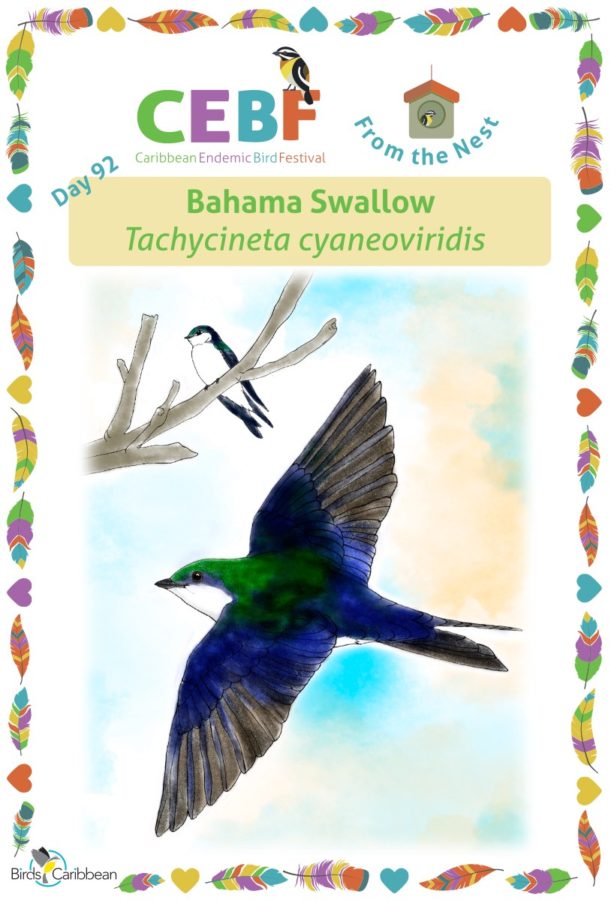Celebrate the Caribbean Endemic Bird Festival (CEBF) with us! Our theme in 2022 is “Loving Birds is Human Nature”. Have fun learning about a new endemic bird every day. We have colouring pages, puzzles, activities, and more. Download for free and enjoy nature with your family at home.
Endemic Bird of the Day: Bahama Swallow
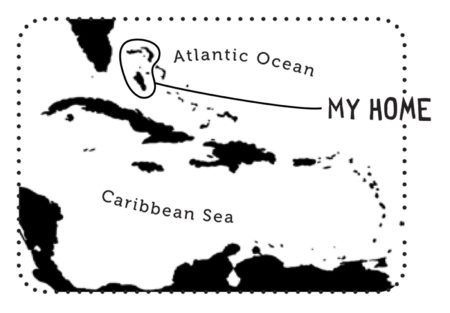 On the most northern islands of The Bahamas, this acrobatic bird can be seen flying low over the roads, fields, and other open habitats. Its ability to twist and turn at the last second is truly impressive – the fighter jets of the bird world. Is it just showing off? No, the Bahama Swallow (Tachycineta cyaneoviridis) is hunting, grabbing unlucky flying insects directly out of the air.
On the most northern islands of The Bahamas, this acrobatic bird can be seen flying low over the roads, fields, and other open habitats. Its ability to twist and turn at the last second is truly impressive – the fighter jets of the bird world. Is it just showing off? No, the Bahama Swallow (Tachycineta cyaneoviridis) is hunting, grabbing unlucky flying insects directly out of the air.
But if a Bahama Swallow will sit still long enough, the stunning beauty of this Bahamian endemic will blow you away. The deep metallic green on its crown and upper back fades into dark blue, and then into grayish-brown on its long wings and forked tail. These gorgeous colors contrast sharply with the purest of whites on the throat and belly, which continues under part of the wing. The white under the wing, along with a more deeply forked tail, can help distinguish it from its close relative, the Tree Swallow.
During the breeding season (March – July), this special bird can only be found on three islands in the Northern Bahamas – Grand Bahama, Andros, and Abaco. Along with New Providence, these islands are the only ones in the Bahamian archipelago that contain large areas of Caribbean pine. During the non-breeding season, a few birds may wander south to other islands in the Bahamas, to northern Cuba, and the Florida Keys. More study on the species’ movements are needed!
The swallow has a strong connection with this unique and magical pine forest habitat. The species is a secondary cavity-nester, meaning that it will only build a nest in a cavity (i.e., a hole of some kind), but it cannot create this cavity for itself. Luckily for the swallow, two woodpecker species — the Hairy Woodpecker and the West Indian Woodpecker — are very good at making nesting cavities in dead trees. After the woodpeckers are done with them, the swallow can jump in! But it is generally safer for swallows to use the cavities in the pine forest, usually made by the Hairy Woodpecker, where they are less exposed to competition and predation.
The Bahama Swallow is an Endangered species, and its survival depends on healthy pine forest and woodpeckers to continue to make nesting cavities. The largest threat to the swallow is habitat loss from development and natural disasters like hurricanes. For example, in 2019, Hurricane Dorian destroyed huge sections of pine forest habitat on Grand Bahama and northern Abaco, where swallow populations were already small. So protecting the pine forest on Abaco and Andros is more important than ever to conserve this special bird! Learn more about this species, including its range, photos, and calls here.
Colour in the Bahama Swallow
Download our West Indies Endemic Bird colouring page. Use the photos below as your guide, or you can look up pictures of the bird online or in a bird field guide if you have one. Share your coloured-in page with us by posting it online and tagging us @BirdsCaribbean #CEBFfromthenest
Listen to the song of the Bahama Swallow
The song of the Bahama Swallow is a jumble of liquid notes, they also have a “chet-chet” call which can be heard in this recording.
Puzzle of the Day
Click on the image below to do the puzzle. You can make the puzzle as easy or as hard as you like – for example, 6, 8, or 12 pieces for young children, all the way up to 1,024 pieces for those that are up for a challenge!
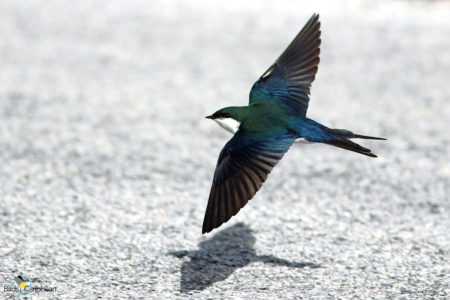
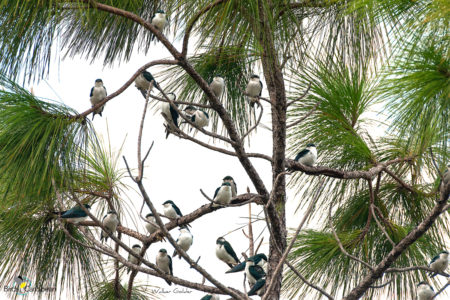
Activity of the Day
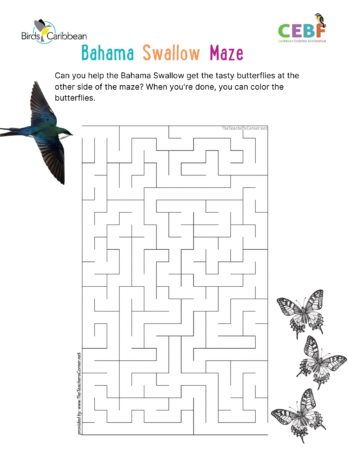 FOR KIDS: Bahama Swallows feed on insects, swooping through the air to catch them on the wing! Can you help this hungry Bahama Swallow find its way through our maze to to grab some tasty insect food? You can find the correct route here.
FOR KIDS: Bahama Swallows feed on insects, swooping through the air to catch them on the wing! Can you help this hungry Bahama Swallow find its way through our maze to to grab some tasty insect food? You can find the correct route here.
FOR KIDS AND ADULTS: Want to find out more about the Bahama Swallow and what it is like to study these beautiful little birds? Read all about the work of ecologist and ornithologist Maya Wilson. Maya’s graduate research was focused on understanding more about the status and breeding biology of this endangered island endemic. In her blog post below you can share a day in the field with Maya as well as learning more about the fascinating research she carried out in the Bahamas.

